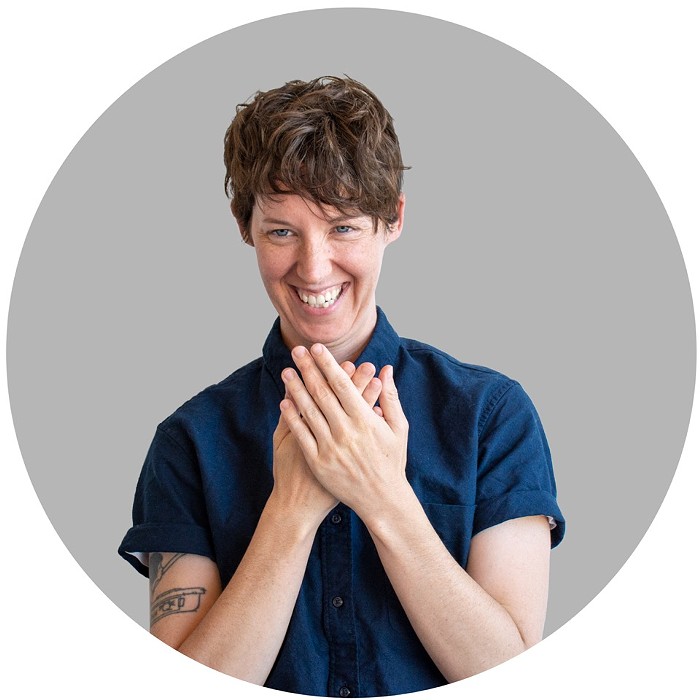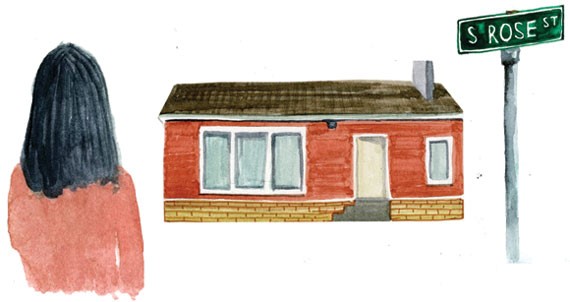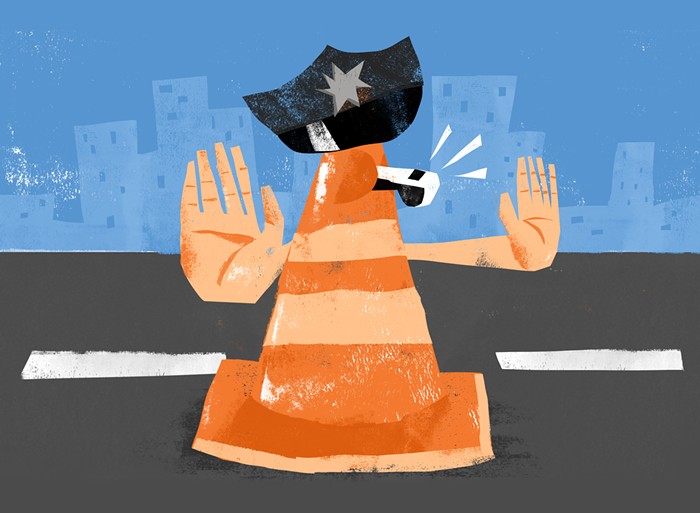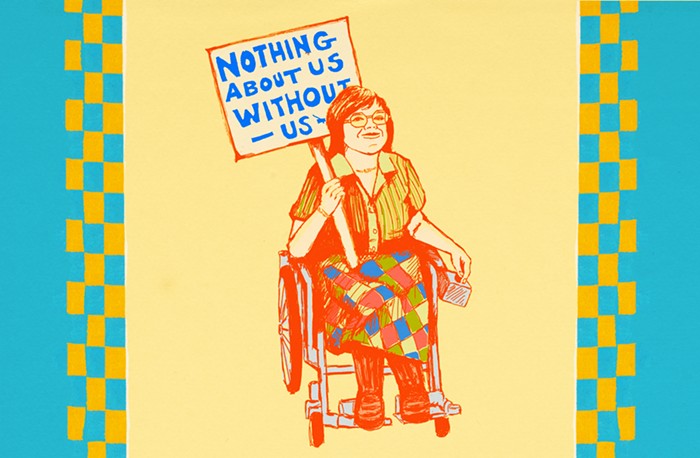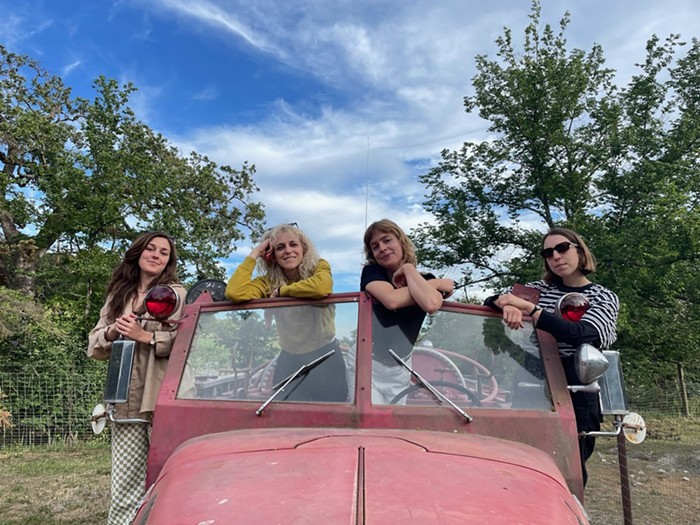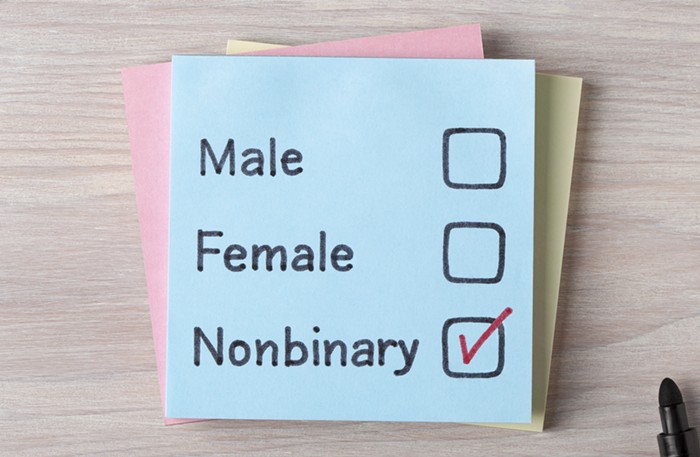
In the beginning, the future was female.
This four-word slogan started popping up online in the last few years, but it originated with a snapshot taken by Liza Cowan in 1975. The photo, which has gone viral many times over on Instagram, shows Cowan’s then-girlfriend, a folk singer named Alix Dobkin, with short hair, red-framed glasses, and a white t-shirt that read, in all caps, “THE FUTURE IS FEMALE.” According to the New York Times, the shirt was designed for Labyris Books, the first women’s bookstore in New York City, and Cowan titled her photo, “What The Well-Dressed Dyke Will Wear.”
Dobkin is now in her late 70s and Labyris long ago closed, but in the heady days before the election of November 2016, the photo, and the slogan, were everywhere. Hillary Clinton even used it on the campaign trail. Naturally, companies noticed. “The Future Is Female” was repurposed by the apparel store Otherwild, which started selling its own version of the shirt for $50 and donating a portion of sales to Planned Parenthood.
The shirt was a hit, photographed on contemporary tastemakers like Kelly Rowland, Annie Clark (the musician behind St. Vincent), and her then-model girlfriend Cara Delevingne. It spread to bracelets, calendars, cards, tote bags, onesies, and anything else you can print with four words and mark up. There are now knock-off Future Is Female shirts you can get online for much less than Otherwild sells them—no donation to Planned Parenthood required. Or, for a more bespoke version, just search on Etsy, and you’ll find over 6,000 Future Is Female products to choose from.
Despite the slogan’s popularity, “The Future Is Female” is not without its critics. Originally, the slogan was a nod to dyke culture, lesbian separatism, and a future without men. In the intersectional politics du jour, however, the slogan was eventually deemed exclusionary. This was not because the slogan excludes men (who cares about them) but because the concept of female itself has, in some circles, been deemed problematic.
On Tuesday, Rewire News published an opinion piece called, “No, the Future Is Not Female. It’s Nonbinary.” Written by Jessica Porten, a self-identified “white heterosexual woman who was assigned female at birth and has birthed two children," Porten writes, “The word ‘female’ is still invoked as the scientific definition of a biological woman, which incorrectly conflates sex and gender and erases the identities of intersex and nonbinary people. ... I am not saying everyone should or will eventually identify as nonbinary. But the future is one where we don’t push a binary norm. The future should be nonbinary," she concludes. "Period.”
There is, however, a big difference between intersex and nonbinary. The term “intersex” describes a variety of medical conditions, usually stemming from a genetic anomaly. Some intersex people are born with ambiguous genitalia, like a micropenis or an atypically large clit. Others are born without the usual pairing of XX or XY chromosomes.
For much of modern history, people with these conditions have been forced to undergo surgery to “correct” the appearance of their genitals, often when they are infants and without their consent. After years of activism on the part of people with intersex conditions, however, “normalizing” genitals through surgery is no longer as common. Intersex people born now are often free to grow up with their junk intact. Some elect to have surgery later, and others don't.
Nonbinary, however, is something entirely different, and the two should also not be conflated. It’s not a medical condition or a genetic anomaly and, with the rare exception of people raising “theybies,” or gender-neutral children, it’s not something, generally speaking, people are born with. Some intersex people are themselves nonbinary, but the concept is about gender identity, not sex. It’s a label, one that says, “I’m not a man or a woman. I’m something else.”
Motivations for identifying as nonbinary vary: Some nonbinary people (or enbies, as they are called) report that they have a feeling deep inside of being neither male nor female—or, alternatively, of being both. This feeling is not necessarily gender dysphoria, and while some transgender people are nonbinary, there are many (perhaps more) trans people who readily identify as men or women. Some enbies are androgynous or bounce between looks, and others are assigned male at birth and present masculine and others are assigned female at birth who present feminine. Writer Peter Coffin, for instance—a bearded father of two who is married to a feminine-presenting woman—came out earlier this year as “agender,” a subsidiary of the nonbinary identity. Why? Because, in his own words, he “disliked [his] place in the gender dynamic.” So, instead of working to dismantle a hierarchy that places men at the top and women at the bottom, he simply stopped identifying as a man, while, of course, still receiving all the privileges of people who look like them. I suppose that’s one way to deal with structural sexism.
While there's been no comprehensive census of people calling themselves nonbinary (much less agender), gray-bearded fathers like Peter Coffin, are, from my observation, the minority. Far more common are people like Sam Escobar, a 20-something assigned-female-at-birth (née woman) and deputy director at Allure who uses the pronouns they/them. Escobar described their journey to becoming an enby for Esquire.
“I only began investigating my curiosity when I got to college,” they write. “After hours of combing through message boards and LGBTQ-centric sites, I realized that on top of being queer, I identified considerably with men. It had nothing to do sports, beer, or bro hugs. To be frank, I realized that, among other things, when I watched straight porn I saw myself from the male perspective.”
After this revelation, Escobar writes that they bought a binder for their chest, started applying their makeup in a more androgynous fashion, and considered cutting their hair, though ultimately didn't. Years later, now out of college and living in New York in a community of queer people of all genders and identities, they publicly came out on Facebook, writing, they say, "I identify as queer and non-binary. I prefer they and them pronouns. This is me coming out." They've got plenty of company: According to a GLAAD study from last year, 20 percent of millennials identify as LGBTQ; 12 percent identify as trans or otherwise gender nonconforming. It’s hip to be queer. It’s even hipper to be nonbinary. (And I will almost certainly be accused of enbyphobia for pointing this out.)
One of the great things about living in a free society is that we are able to, largely, do as we please, as long as our doing doesn’t harm anyone else. I’d much rather live in a society where people like Coffin and Escobar are able to freely experiment with identity (or fashion, which often seems to be the same thing) than someplace without that same freedom. I don't want to denigrate any individual's identity, a concept that has taken on near religious status as of late, and I generally believe adults should do and call themselves whatever they want. But for every article or Tumblr post celebrating nonbinary identities and inclusion, there’s a real lack of discussion on what the rise of the nonbinary identity means for those who actually identify as, who actually are, just women.
In its effort to be inclusive, “The Future Is Nonbinary” (now also available as a t-shirt) does exactly the same thing that Porten complains about: It erases a population. In this case, the population is women, both cis and trans. Perhaps ironically, it seems to be mostly young women doing the erasing, and when our news feeds are filled with stories of women being harassed, assaulted, and oppressed, it’s not hard to see why they’d reject being a woman at all. Women, in much of the are world are on the bottom of the hierarchy. Who wouldn’t want to get out from that? Identifying as nonbinary can be a way of creating your own exemption. It is, perhaps, ironic that trend is ballooning mostly in the U.S. and other egalitarian societies instead of, say, Saudia Arabia, where women need a man's permission to do much of anything. (Then again, in places where women are legally second-class, you probably can't opt out of being one.)
Enbies have some privileges women don't. Take Instagram, one of many platforms where women are not permitted to show their nipples. If, however, those same nipples are on a nonbinary person, it's totally fine. Instagram will leave those nipples up. Personally, Instagram's ban on women's nipples doesn't impact my lifestyle all that much, but it's about more than that. It's about equal treatment and double standards, and if men and nonbinary people can go topless, why the hell can't women, too? As Rain Dove, a nonbinary model permitted to post topless pics on Instagram shows, they're often the the very same tits.
“We all have moral and ethical obligations to decolonize our thoughts and language, rooting out binaries that label and devalue people,” Porten writes in Rewire. But she neglects that the term “nonbinary” often ignores the broad spectrum of interests, abilities, and emotions of women and men alike. Instead of broadening our concepts of what men and women can be and do—instead of saying a woman can fix cars and man can wear makeup and they can still be women and men—the nonbinary identity throws everyone else under the gender-role bus. Identifying as nonbinary is a fix for the individual, not for the whole, and I’m not sure how, in the long run, that helps anyone.
Besides, the original slogan was not just about women. It was about gay women, another population that has rapidly been erased. Lesbian bars and bookstores and cafes are closing. Half of the lesbians I knew in the early 2000s are now either nonbinary or transmen. And Porten, who, according to her own admission, is heterosexual, is arguing that an ode to dyke culture should be supplanted by one that centers people who have rejected the concept of women. It's hard to see what's so progressive about that.
Now, I don’t think “The Future Is Female” is a particularly appropriate slogan for this moment in time either. (Someone gave me a cheap version of the t-shirt and now it’s a rag.) The slogan made sense in the ‘70s when lesbians like Cowan and Dobkin were still anathema and women more broadly were still emerging from decades in which their best options for a career were maid, secretary, teacher, nurse, or a wife. Women still did all the housework and raised all the kids. “The Future Is Female,” at that time, was a radical statement about women’s lib. Now, it's just an easy way to advertise your feminist bonafides. It's a t-shirt you can buy off Amazon, a credit card but no liberation required. Still, “The Future Is Nonbinary” is equally empty. It might look good on Instagram, but all it does is reenforce gender stereotypes. The reality is, we all have elements of both the masculine and the feminine. This doesn't make you binary or nonbinary. It makes you a human.
